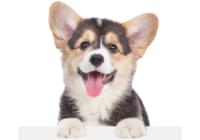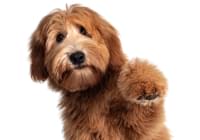Sniff before You Snap: Food Aggression in Pets
Some animals become territorial when food enters the equation.
Without the proper training and attention, food aggression in pets can become a serious (and dangerous) problem for you and any other animals you might have in the home. If you do not want every mealtime to end in a fight, it is important to address this behavior before it escalates. Highway Veterinary Hospital is here to help you deal with this aggression so you and your pets can eat in peace:
What Causes Food Aggression in Pets?
Even pets who have otherwise calm temperaments might display aggressive tendencies when it comes to food. Although it is not necessary to understand the cause to find a way to decrease food aggression, it might be helpful to know a little more about its origins. These are a few of the reasons this might be happening:
- It's Instinct. In the wild, dogs must protect their territory (and food) in order to survive. Even a completely domesticated dog might still display aggressive and territorial behaviors when it comes to their food because it's a part of their genetic makeup.
- It's Part of Puppy Life. Puppies are often fed in the litter, which means they have to be proactive if they want to get any of the food. If you have a younger dog, they might still jump snout-first into their bowl to overcome their fear of missing out on the feast.
- It's a form of PTSD: Just like humans, dogs can experience post-traumatic stress disorder (PTSD) after a particularly traumatic event, and sometimes this PTSD can emerge as food aggression.
- It's Leftover Shelter Behavior:Dogs who come from shelters sometimes become somewhat aggressive around food even after they are comfortable in their new homes.
What Can You Do About Food Aggression?
In most cases, you can decrease the amount of food aggression your dog displays with a little bit of effort to train them away from this behavior. If your dog is displaying mild (growling while eating or when someone else approaches), moderate (snapping at someone), or severe (biting someone who gets too close to food) food aggression, the following steps can help:
- Make Your Presence Comfortable: Stand near your dog as he eats for about ten meals in a row. Give him a few feet of leeway and don't interact as he eats. The goal is simply to get him comfortable with your presence during mealtime.
- Give a Treat: Once your dog is more comfortable with you standing nearby as she eats, place a treat in the bowl and step back. Continue this process consistently until the dog allows you to stand closer while eating.
- Converse With The Dog: When you feel he is ready, give your dog his food, then stand by and talk to him as you place a treat in his bowl. Once you've parted with the treat, you can walk away and let him eat.
- Hand Feed The Treat: Once your dog is comfortable with you standing close to deposit the treat, you can try to offer it from your hand. Once the dog has taken the treat, be sure to walk away to show her you are not interested in taking her food.
- Touch The Bowl: After you've established a comfortable rapport with your dog taking treats from your hand, you should touch his bowl as you give him the treat. Do not take anything from the bowl, just place your hand on it. This will eventually show him that you are helping him eat instead of competing with him for food.
- Pick Up The Bowl: Once you feel your dog is ready, you should gently pick up the bowl and put a treat into it. Be sure to speak softly to your dog as you do this and start by only raising it about six inches off the ground until she gets more comfortable.
- Let Other Family Members Try: Once your dog is completely comfortable with you standing near his food, repeat the entire process with all other members of your family.
Highway Veterinary Hospital is here to help you with all aspects of your pet's care. From Bowie wellness visits to surgery, our primary goal is to support the human-animal bond. To learn more about our services or to schedule an appointment, call (301) 249-2005 or visit us online.





